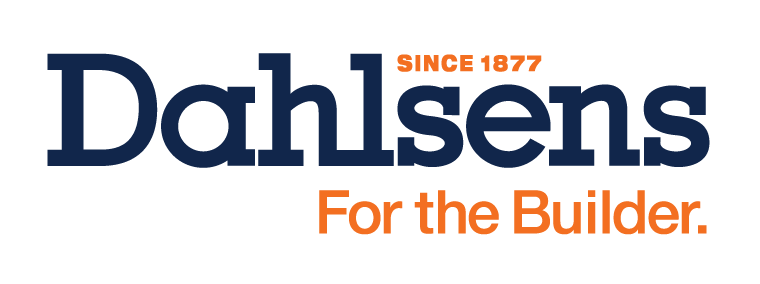
The quality of every building product that you select for your construction projects is vital to ensuring the safety of your staff, contractors and of course the final building owner/resident.
Dahlsens understands the important role product quality plays in building both your business’ success and reputation. That’s why you can count on us to source and supply the safest, and highest quality products on the market.
Building Standards in Australia
Australian building product standards and specifications are in place to ensure the quality and safety of residential and commercial construction. Developed by a committee of representatives including members from industry, manufacturers, government and consumers, Australian standards act as a benchmark for national product quality and performance.
While Australian building standards remain high, Dahslens is vigilant in monitoring the production standards of our suppliers, only offering product ranges that conform to the strictest standards.
How are Standards determined?
Acceptance tests
Acceptance tests are required to demonstrate compliance with standards on a routine basis. Products are classified into Types. “Type A” external use products and “Type B” internal use products. These are then further categorised according to minimum flexural strength.
Type characteristics tests
Type characteristics tests are designed to test the product properties. These relate to the performance of products when in service. All individual characteristic tests follow detailed procedures, and a minimum product performance level must be achieved before approval.
What is the difference between product conformance and compliance?
Non-conforming building products (NCBPs)
According to the Australian Building Codes Board(ABCB), NCBPs include:
- Products that claim to be something that they are not
- Products that don’t meet the required standards for their intended use
- Products marketed or supplied with the intent to deceive those who use them.
Example of a NCBP
A building product that is falsely labelled non-combustible when it is a combustible product.
Non-compliant products (NCPs)
A non-compliant product occurs when a product is used under circumstances that are not in accordance with the requirements outlined in the National Construction Code(NCC).
Example of a NCP
A product marked combustible that is used in circumstances that require a non-combustible product.
How do Dahlsens’ suppliers rate?
Dahlsens only deals with reputable suppliers. Each of our suppliers must produce superior products that meet or exceed relevant Australian standards and compliance measures.
Our experienced team vet each of our suppliers to determine their manufacturing processes and commitment to product safety.
Bradnams: leading the way in bushfire safety
In a dry and bushfire prone country like Australia, fire safety standards are particularly important to home owners. Dahlsens’ supplier, Bradnmans are leaders in the manufacture of widows and doors that conform to strict standards for construction and retrofitting on buildings in a bushfire-prone area.
Building products utilised in areas with a bushfire risk of BAL-12.5 or above, must comply with AS3959: 2009. These protective measures play a vital role in improving the ability of a structure to withstand fire and provide owner or occupant protection.
Bradmans’ exclusive FlameShield Range has received a safety rating that meets BAL-12.5, BAL-19, BAL-29 and BAL-40 standards. Their FlameShield range of bushfire doors and windows include louvre, sliding, awning, casement, double hung and bi-fold windows and sliding, hinged and bi-fold doors.
Technika gas cooktops: cutting-edge safety
Gas can be a silent killer, and this fact has driven recent changes to Australian and New Zealand safety standards. From 1 July 2017, all cooktops are required to include a flame failure device. This means cooktops should automatically cut out or re-ignite when a flame goes out to avoid any unnoticed gas release.
Technika are at the forefront of this technology and were early adopters of flame failure devices.
James Hardie: fibre cement
James Hardie are Dahlsens’ major fibre cement supplier. Their rigorous testing processes have resulted in the development of world-leading fibre cement.
James Hardie’s commitment to safety includes the following accreditations:
- AS2908.1 ‘Cellulose-cement products’ (Part 1: Corrugated Sheets)
- AS2908.2 ‘Cellulose-cement products’ (Part 2: Flat Sheets)
- International ISO8336 & ASTM Fibre Cement Standards C1185 & C1186 for their products development in Australia and the USA. James Hardie fibre cement has set a benchmark for building products of its kind.
- All James Hardie Research & Development Laboratories in Australia are NATA certified
- NATA certificates are also available for each type of test required by Australian Standards.
Weathertex: hardboard cladding
Australian-made Weathertex cladding is specifically designed to handle Australia’s harsh environment and meets both bushfire and high wind safety standards.
Weathertex proudly meets or exceeds the following Australian building standards:
- All Building Code Australia cladding standard requirements
- AS1859.4 wet processed fibreboard (HBE)
- Internal & external corner accessories, joiners, appropriate flashings for all openings and penetrations are all manufactured in accordance with NCC standards
- AS4040 Cyclonic and non cyclonic wind zones
- Up to and including BAL-19 & AS3959 Construction of buildings in bushfire-prone areas.
CSR Hebel: Scandinavian engineering
Hebel’s signature offering, Autoclaved Aerated Concrete technology (AAC), provides a lightweight, environmentally friendly cladding alternative.
First developed more than 70 years ago, AAC is ‘deemed to satisfy’ all relevant areas of the Building Code of Australia (BCA). Hebel products meet relevant Australian safety standards AS5146: 2015 (Parts 1-3).
Unitex: Uni-base board cladding
The unique Unitex Uni-base board cladding formula combines Unitex Polymer Render coating with reinforcing AR/FG Mesh to EPS insulation panels. Manufactured locally, Unitex proudly focuses on the safety and quality of their engineering:
- All Unitex manufacturing undergo regular internal audits and annual external audits by CodeMark and BRANZ Assessors
- All products are ‘deemed to satisfy’ all BCA/National Construction Code (NCC) requirements
- Systems accredited under CodeMark satisfy bushfire ratings for BAL-29 and BAL-40.
Timberlink Australia: timber with a difference
Timberlink Australia provide sustainable, plantation pine manufactured and fit for purpose. Their safety focus extends to offering the Timberlink client-base an exclusive online safety and installation course, Timberlink TECH.
Galintel from NEPEAN Building and Infrastructure
A local manufacturer of galvanised steel lintels, NEPEAN is Queensland’s leading manufacturer of galvanised steel and warrant their products for 25 years. NEPEAN’s Galintel® range is manufactured and tested to meet Australian Standards and is compliant with the Building Code of Australia.
Following the amendments to the Queensland Building & Construction Commission Act 1991 (QBCC Act)and the Queensland Building and Construction Regulation 2003 (QBCC Reg), NEPEAN Building and Infrastructure has joined local building materials manufacturers in calling for all parties to take action against non-conforming building products.
Installation and compliance
Dahlsens takes your ability to meet compliance requirements seriously. Our highly experienced team and strong supplier relationships mean we are well placed to provide you with any training you may require to properly install new building products in accordance with strict industry guidelines.
For more information, speak to your local Dahlsens store or Account Manager or email us.

